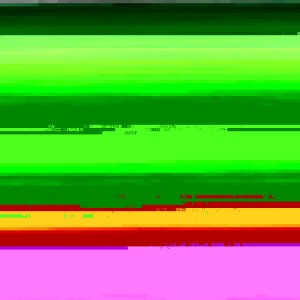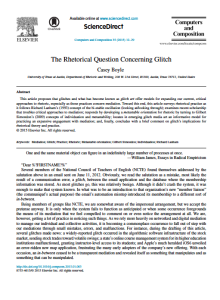The Rhetorical Question Concerning Glitch
 This article proposes that glitches and, what has become known as glitch art, offer models for expanding our current, critical approaches to rhetoric, especially as those practices concern mediation. Toward this end, this article surveys rhetorical practice as it follows Richard Lanham’s concept of the bi-stable oscillation (looking at/looking through); examines recent scholarship that troubles critical approaches to mediation; responds by developing a metastable orientation for rhetoric informed by Gilbert Simondon’s concepts of individuation and metastability; locates in emerging glitch media art an informative model for practicing/exercising an expansive engagement with mediation; finally, the article concludes with a brief comment on glitch’s implications for further rhetorical theory and practice.
This article proposes that glitches and, what has become known as glitch art, offer models for expanding our current, critical approaches to rhetoric, especially as those practices concern mediation. Toward this end, this article surveys rhetorical practice as it follows Richard Lanham’s concept of the bi-stable oscillation (looking at/looking through); examines recent scholarship that troubles critical approaches to mediation; responds by developing a metastable orientation for rhetoric informed by Gilbert Simondon’s concepts of individuation and metastability; locates in emerging glitch media art an informative model for practicing/exercising an expansive engagement with mediation; finally, the article concludes with a brief comment on glitch’s implications for further rhetorical theory and practice.
“Dear %?FIRSTNAME?%” (12).
“In adopting a metastable orientation, we practice a rhetoric that is not only the mediation between two things but also, perhaps, the mediation of those two things (and more and less). With a metastable orientation, what we consider as subjects and objects switch, merge, and transduce positions in a manner that is difficult to consciously know but is a process within we might come to know with (a lot of) practice” (22).
“Instead of considering rhetoric and glitch as forms of training in resistance tactics, we might more productively consider rhetoric and glitch through metastable orientations as resistance training.To put this another way, much like when we exercise in a gym, straining regions of the body we rarely use (much less know), so too might practices like those involved with glitch art attune us to the embodied medial conditions that inform us” (27)


